#detective bureau 2 3 go to hell bastards
Explore tagged Tumblr posts
Text

Detective Bureau 2-3: Go to Hell, Bastards! (1963) dir. Seijun Suzuki
6 notes
·
View notes
Text

taking myself out to the movies tonite
5 notes
·
View notes
Text

#Detective Bureau 2-3: Go to Hell Bastards!#Joe Shishido#Reiko Sasamori#Tamio Kawachi#Nobuo Kaneko#Seijun Suzuki#1963
0 notes
Text

new-to-me #178 - Detective Bureau 2-3: Go to Hell, Bastards!
12 notes
·
View notes
Text
Las 242 peliculas que he visto en 2023 (parte 1)
Tarzan y su compañera (Cedric Gibbons, 1934).
2. El fantasma y la Sra Muir (Joseph L Mankiewicz, 1947)
3. Odio entre hermanos (Joseph L Mankiewicz, 1949)
4. Testigo accidental (Richard Fleischer, 1952)
5. El rastro de la pantera (William A Wellman, 1954)
6. El tigre dormido (Joseph Losey, 1954)
7. El quinteto de la muerte (Alexander McKendrick, 1955)
8. 40 pistolas (Samuel Fuller, 1957)
9. La maldición de Frankenstein (Terence Fisher, 1957)
10. Ocho horas de terror (Seijun Suzuki, 1957)
11. The Trollenberg terror (Quentin Lawrence, 1958)
12. La Venganza (Juan Antonio Bardem, 1958)
13. Un golpe de gracia (Jack Arnold, 1959)
14. A todo riesgo (Claude Sautet, 1960)
15. La evasion (Jacques Becker, 1960)
16. El sabor del miedo (Seth Holt, 1961)
17. Detective bureau 2 3. Go to hell bastards! (Seijun Suzuki, 1963)
18. The white tiger tattoo (Seijun Suzuki, 1965)
19. A traves del huracan (Monte Hellman, 1966)
20. El Tiroteo (Monte Hellman, 1966)
21. La soltera retozona (Silvio Narizzano, 1966)
22. Dimension 5 (Franklin Adreon, 1966)
23. Los Productores (Mel Brooks, 1967)
24. Un hombre (Martin Ritt, 1967)
25. Sebastian (David Greene, 1968)
26. El Bastardo (Duccio Tessari, 1968)
27. El lagarto negro (Kinji Fukasaku, 1968)
28. La louve solitaire (Edouard Logereau, 1968)
29. Aquel dia frio en el parque (Robert Altman, 1969)
30. Corazones en fuga (Michael Powell, 1969)
31. La bestia ciega (Yasuzo Masumura, 1969).
32. El bosque del lobo (Pedro Olea, 1970)
33. El grito del fantasma (Gordon Hessler, 1970)
34. Drácula y las mellizas (John Hough, 1971).
35. ¡Que viene Valdez! (Edwin Sherin, 1971)
36. Sangre en la tumba de la momia (Seth Holt, 1971)
37. El Otro (Robert Mulligan, 1972)
38. Hermanas (Brian de Palma, 1972)
39. Imagenes (Robert Altman, 1972)
40. Morgiana (Juraj Herz, 1972)
41. El ataque de los muertos sin ojos (Amando de Ossorio, 1973)
42. El programa final (Robert Fuest, 1973)
43. Flor de santidad (Adolfo Marsillach, 1973)
44. Lemora, un cuento sobrenatural (Richard Blackburn, 1973)
45. Messiah of Evil (Willard Huyck y Gloria Katz, 1973)
46. Una vela para el diablo (Eugenio Martin, 1973).
47. Daguerrotipos (Agnes Varda, 1975)
48. La noche de las gaviotas (Armando de Ossorio, 1975)
49. Picnic en Hanging Rock (Peter Weir, 1975)
50. El otro Sr Klein (Joseph Losey, 1976)
51. Terror al anochecer (Charles B Pierce, 1976)
52. El desafio del bufalo blanco (J Lee Thompson, 1977)
53. Largo fin de semana (Colin Eggleston, 1978)
54. El grito (Jerzy Skolimowski, 1978)
55. Los ojos del bosque (John Hough, 1980)
56. Alison’s birthday (Ian Coughlan, 1981)
57. Muertos y enterrados (Gary Sherman, 1981)
58. Wilczyca (Marek Piestrak, 1983)
59. En compañia de lobos (Neil Jordan, 1984).
60. Sangre Facil (Joel Coen, 1984)
61. Sole survivor: Unico superviviente (Thom Eberhardt, 1984)
62. Tasio (Montxo Armendariz, 1984)
63. El tren del infierno (Andréi Konchalovski, 1985)
64. El corazon del angel (Alan Parker, 1987)
65. Jovenes Ocultos (Joel Schumacher, 1987)
66. La chaqueta metalica (Stanley Kubrick, 1987)
67. El fluir de las lagrimas (Won Kar Wai, 1988)
68. Ensalada de gemelas (Jim Abrahams, 1988)
69. Kadaicha, la piedra de la muerte (James Bogle, 1988)
70. Pacto de Sangre (Stan Winston, 1988)
71. Avalon (Barry Levinson, 1990).
72. Misery (Rob Reiner, 1990)
73. La Teranyina (Antoni Verdaguer, 1990)
74. La Tutora (William Friedkin, 1990)
75. Morir Todavia (Kenneth Branagh, 1990)
76. La jungla de cristal 2 (Renny Harlin, 1990)
77. Solo en casa (Chris Columbus, 1990)
78. Alien 3 (David Fincher, 1992)
79. Mi novia es un zombi (Michele Soavi, 1994)
80. Nadja (Michael Almereyda, 1994)
81. Esto (no) es un secuestro (Ted Demme, 1994)
82. Dos Policias Rebeldes (Michael Bay, 1995)
83. El demonio vestido de azul (Carl Franklin, 1995)
84. Heat (Michael Mann, 1995)
85. Jovenes y brujas (Andrew Fleming, 1996)
86. Agarrame esos fantasmas (Peter Jackson, 1996)
87. Herbert's Hippopotamus: Marcuse and Revolution in Paradise (Paul Alexander Juutilainen, 1996).
88. La Roca (Michael Bay, 1996)
89. Tierra (Julio Medem, 1996)
90. 99.9. La frecuencia del terror (Agusti Villaronga, 1997)
91. Fallen (Gregory Hoblit, 1998)
92. Un plan sencillo (Sam Raimi, 1998)
93. El halcon ingles (Steven Soderbergh, 1999).
94. Ilusiones de un mentiroso (Peter Kassovitz. 1999)
95. Flores de otro mundo (Iciar Bollain, 1999)
96. Ravenous (Antonia Bird, 1999)
97. Wisconsin Death Trip (James Marsh, 1999)
98. Dagon: La secta del mar (Stuart Gordon, 2001)
99. Escalofrio (Bill Paxton, 2001)
100. Dracula: Pages from a Virgin's Diary (Guy Maddin, 2002)
101. 2 hermanas (Jee-Woon Kim, 2003)
102. Dos policias rebeldes II (Michael Bay, 2003)
103. Los Angeles Play Itself (Thom Andersen, 2003)
104. El reportero: La leyenda de Ron Burgundy (Adam McKay, 2004)
105. El Septimo Dia (Carlos Saura, 2004)
106. La vida que te espera (Manuel Gutierrez Aragon, 2004)
107. Los Edukadores (Hans Weingartner, 2004)
108. Misteriosa obsesion (Joseph Ruben, 2004)
109. Yo, Robot (Alex Proyas, 2004)
110. Hostel (Eli Roth, 2005)
111. Wolf Creek (Greg McLean, 2005)
112. Bajo cero (Frank Marshall, 2006)
113. El Inadaptado (Jens Lien, 2006)
114. Sheitan (Kim Chapiron, 2006)
115. The last winter (Larry Fessenden, 2006)
116. 30 dias de oscuridad (David Slade, 2007)
117. Borderland. Al otro lado de la frontera (Zev Berman, 2007)
118. Diarios de la calle (Richard LaGravenese, 2007)
119. Frontera(s) (Xavier Gens, 2007)
120. Hostel 2 (Eli Roth, 2007)
121. Water Lilies (Celine Sciamma, 2007)
2 notes
·
View notes
Text
Retrospective: Seijun Suzuki.
Retrospective is a regular series showcasing bodies of work from an extended period of activity by filmmakers of different eras.
Devoted to the region’s film history, contributions and movements within the industries in Asia, the platform focuses on particular profiles, themes and aesthetics to allow audiences to experience past and ongoing cinematic transformations.
On the occasion of 100 years since the birth of singular Japanese director Seijun Suzuki (1923-2017), the Asian Film Archive presents a selection from his vast and colourful filmography.

The seven featured films draw attention to two significant points in Suzuki’s career. The first looks at the gritty, rambunctious crime and gangster films he made at the Nikkatsu studios in the 1960s and his collaborations with action star Jo Shishido. The four works selected from this period start from 1963, with the wild and uproarious Detective Bureau 2-3: Go to Hell, Bastards! and Youth of the Beast—the latter regarded as his breakthrough work and a key influence on the yakuza genre. 1964’s Gate of Flesh is a harsh, yet visually dynamic post-war drama. Lastly, the outrageous and stylish Branded to Kill (1967), notorious for causing Suzuki’s dismissal from Nikkatsu and subsequent blacklisting by the industry.
Making his debut in the mid-50s, Suzuki was a contract director for B-movies, quick and cheap flicks typically screened after the more expensive, prestige pictures. He overcame the gruelling conditions and meagre resources thrown at him, creatively transforming conventions into opportunities for play and experimentation, pushing the form further and further with each new film. Burned by the fallout with Nikkatsu, Suzuki withdrew from cinema. He continued to work in television and only returned to film a decade later.
The second part of this programme represents Suzuki’s comeback with the Taisho trilogy: Zigeunerweisen (1980), Kagero-za (1981) and Yumeji (1991). Produced independently, these works are loosely connected by being set during the Taisho era (1912-1926), an explosive period of artistic and intellectual activity in Japan’s history. Hallucinatory, spectral and dreamlike, these austere masterpieces—markedly different from his earlier career—are nonetheless still bursting with ideas and cinematic fervour.
Energised by the commercial and critical success of his later works, Suzuki continued to make films until the mid-2000s and even had a career as an actor. In 2017, he passed away at the age 93. The legacy of Seijun Suzuki’s body of work is that of an artist whose brilliance and verve could not be restrained. Working within the limitations of structures, his career represents a lifelong mission to reinvent the ecstatic possibilities of the filmic medium.
– Viknesh Kobinathan, Programmer
Retrospective: Seijun Suzuki runs from 6-22 October 2023 at Oldham Theatre. This programme is held in conjunction with Japanese Film Festival Singapore, with support from the Japan Foundation.
Asian Film Archive (affiliated to AMIA, FIAF, SEAPAVAA) Retrospective: Seijun Suzuki. 06-22 October 2023 National Archives Singapore 1 Canning Rise Singapore 179868 Singapore, Singapore
#asian film archive#AMIA#FIAF#SEAPAVAA#cinematographic creation#filmmaking#Japanese Film Festival Singapore#Japan Foundation#filmography#singapore#world day for audiovisual heritage#27 october
0 notes
Text
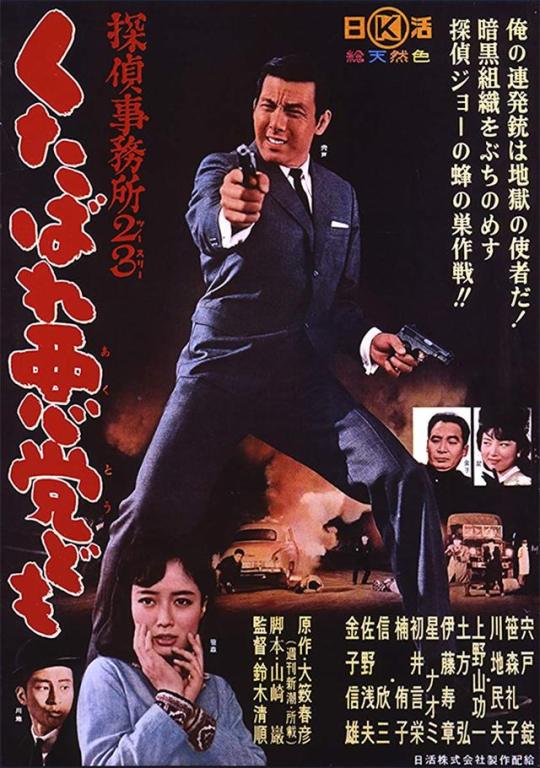

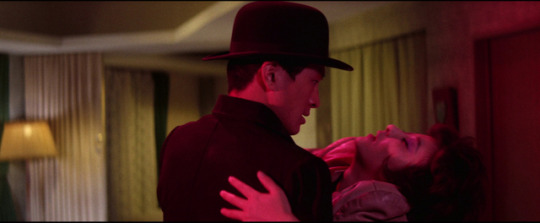
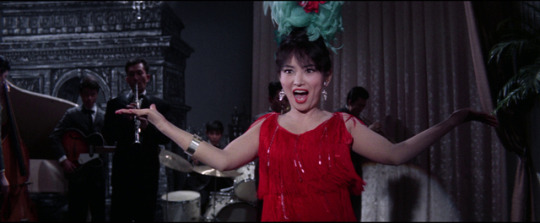

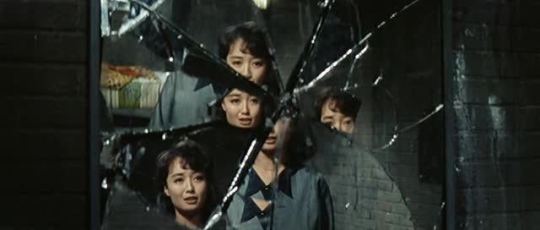
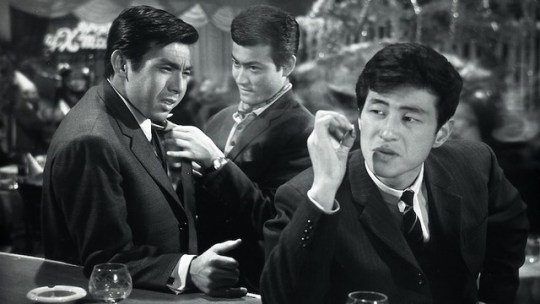
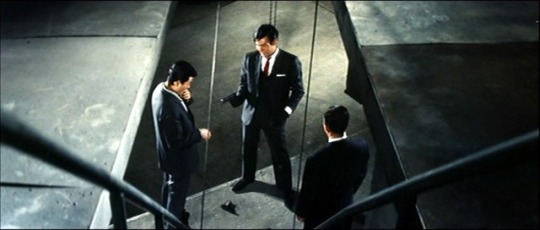
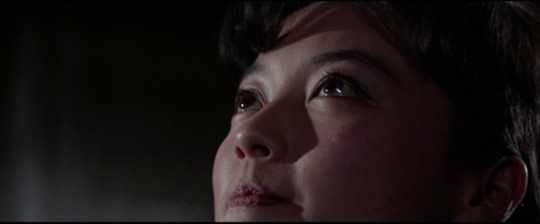
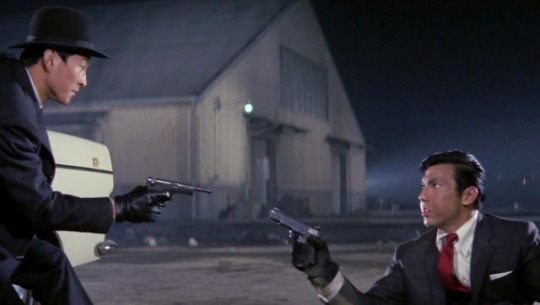
Kutabare akutô-domo - Tantei jimusho 23 (Detective Bureau 2-3: Go To Hell Bastards!, 1963)
"Will you help us out of your sense of justice?"
"I'm not in the mood for jokes. It's work, I'll get paid. I need a gun and a fake driver's license."
#kutabare akutô domo tantei jimusho 23#detective bureau 2 3 go to hell bastards#detective bureau 2 3#go to hell bastards#1963#films i done watched#japanese cinema#yakuza film#seijun suzuki#jô shishido#tamio kawaji#reiko sassamori#nobuo kaneko#kinzô shin#naomi hoshi#asao sano#yûko kusunoki#kotoe hatsui#hiroshi hijikata#iwao yamazaki#on paper i suppose this might easily have been a fairly by the numbers yakuza thriller#but its suzuki so of course its much more than that#a colourful stylish thriller full of eccentrics and dark humour. the support characters are great#especially shishido's employees. lots of familiar faces too. it's not as out there as suzuki's late films but#it's not as formal as his early work either. it belongs to a sort of middle ground of lively genre fare#i suppose the turning point might be the very next film he made. youth of the beast is just that bit more avant garde#and that bit more affecting#still this is great fun and certainly one i will revisit im sure
4 notes
·
View notes
Photo




I found a detective that sits like Riker does
#TNG#Detective Bureau 2 3: Go To Hell Bastards!#The Riker Manoeuvre#Danny watches Detective Bureau 2 3 Go To Hell Bastards!
10 notes
·
View notes
Photo

Detective Bureau 2-3: Go to Hell Bastards! | Seijun Suzuki | 1963
28 notes
·
View notes
Photo




kutabare akutô-domo - tantei jimusho 23 / detective bureau 2-3: go to hell bastards! (jp, suzuki 63)
#Kutabare akutô-domo - Tantei jimusho 23#detective bureau 2-3: go to hell bastards!#suzuki seijun#Jô Shishido#mine Shigeyoshi
3 notes
·
View notes
Photo

Detective Bureau 2-3: Go to Hell Bastards! (1963)
2 notes
·
View notes
Photo

Detective Bureau 2-3: Go to Hell Bastards! / 探偵事務所23 くたばれ悪党ども (1963, dir. Seijun Suzuki)
4 notes
·
View notes
Text
Detective Bureau 2-3: Go to Hell, Bastards! (1963)


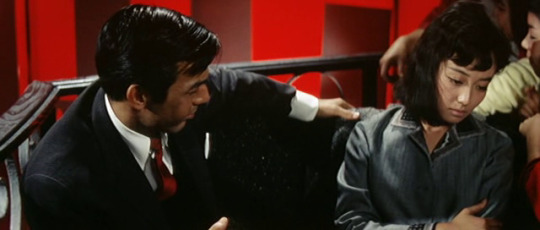




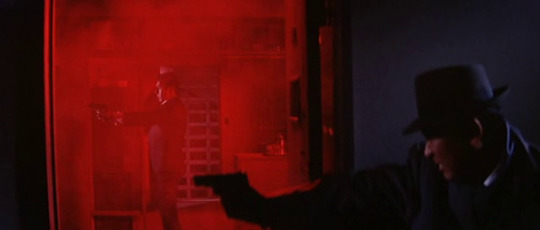
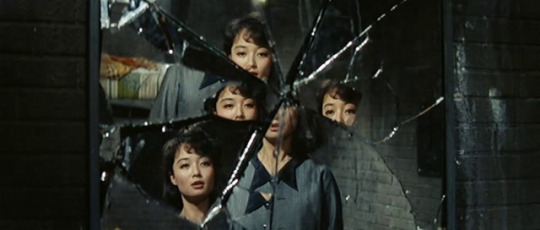
探偵事務所23 くたばれ悪党ども Detective Bureau 2-3: Go to Hell, Bastards! (1963) directed by Seijun Suzuki cinematography by Shigeyoshi Mine
#探偵事務所23 くたばれ悪党ども#seijun suzuki#jō shishido#reiko sasamori#japanese film#japanese cinema#1960s#stills#film noir
11 notes
·
View notes
Note
how do I get started with japanese films? for a long time i've wanted to branch out from american movies and since finding your blog i'd love to start watching japanese films but don't know where to start/where to find them
It’s kinda hard to answer this without knowing what you enjoy in a film bc Japanese cinema is just as varied as the cinema of any other country but one good place to start would be with either Kurosawa (Seven Samurai, Rashomon, Drunken Angel, The Quiet Duel, Ikiru, Throne of Blood, The Hidden Fortress, Yojimbo, Sanjuro, High and Low, Kagemusha, Ran), Ozu (Late Spring, Early Summer, Tokyo Story, A Hen in the Wind, A Mother should be Loved, Floating Weeds, Late Autumn, An Autumn Afternoon, The Only Son, An Inn in Tokyo, Tokyo Twilight), Mizoguchi (The Life of Oharu, Ugetsu, The Crucified Lovers, Sansho Dayu, Osaka Elegy, Sisters of the Gion, Street of Shame, Women of the Night), or Naruse (Floating Clouds, When a Woman Ascends the Stairs, Wife! Be like a Rose!, Late Chrysanthemums, Yearning, Scattered Clouds, Flowing, Sudden Rain). They are often considered the masters of Japanese cinema and their films are still highly respected to this day. Other important directors include:
Kon Ichikawa: The Burmese Harp, An Actor’s Revenge, Enjō, Her Brother, Ten Dark Women, and 47 Ronin
Masaki Kobayashi: Harakiri, The Human Condition, Kwaidan, Somewhere Beneath the Broad Sky, Samurai Rebellion, Hymn to a Tired Man
Keisuke Kinoshita: Twenty-four Eyes, She was like a Wild Chrysanthemum, The Lighthouse, Farewell to Dream
I also recommend many films associated with the nūberu bāgu movement that occurred between the late 50′s into the 70′s, important directors include:
Susumu Hani: Bad Boys, Hatsukoi Jigokuhen, He and She
Shohei Imamura: Pigs & Battleships, The Insect Woman, Unholy Desire, The Pornographers, A Man Vanishes, The Profound Desires of the Gods, Vengeance is Mine, Black Rain, The Eel
Seijun Suzuki: Go to Hell, Hoodlums!, Detective Bureau 2-3: Go to Hell Bastards!, Youth of the Beast, The Flower and the Angry Waves, Gate of Flesh, Tokyo Drifter, Branded to Kill
Nagisa Oshima: Cruel Story of Youth, Night and Fog in Japan, Death by Hanging, Diary of a Shinjuku Thief
Hiroshi Teshigahara: Pitfall, Woman in the Dunes, The Face of Another
Jidaigeki films (period dramas, often set in the Edo period) worth watching include: Bloody Spear at Mount Fuji (dir. Tomu Uchida), Gate of Hell (dir. Teinosuke Kinugasa), Kuroneko (dir. Kaneto Shindo), Onibaba (dir. Kaneto Shindo), The Sword of Doom (dir. Kihachi Okamoto), Bakumatsu Taiyo-den (dir. Yuzo Kawashima), Rikyu (dir. Hiroshi Teshigahara).
Some more contemporary directors I’d recommend include:
Hirokazu Kore-eda: After the Storm, Our little Sister, Nobody Knows, Still Walking, Shoplifters
Naomi Kawase: The Mourning Forest, An, Katatsumori, Embracing, Still the Water
Takeshi Kitano: Dolls, Kikujiro, A Scene at the Sea, Hana-bi, Sonatine, Getting Any?, Kids Return
Takashi Miike: Audition, Blade of the Immortal, 13 Assassins, Rainy Dog, Dead or Alive
also I really love Kinji Fukasaku and I want to mention some of his films that aren’t Battle Royale bc I think people don’t even realise he made other films so some others I like include: Street Mobster, Battles without Honor and Humanity, Cops vs Thugs, Outlaw Killers: Three Mad Dog Brothers, Doberman Cop, Gambling Den Heist, and Graveyard of Honor.
#i realise this is a long answer so i hope it helps you in some way#akira kurosawa#yasujiro ozu#mikio naruse#kenji mizoguchi#kon ichikawa#masaki kobayashi#keisuke kinoshita#susumu hani#shohei imamura#seijun suzuki#nagisa oshima#hiroshi teshigahara#tomu uchida#teinosuke kinugasa#kaneto shindo#yuzo kawashima#kihachi okamoto#hirokazu kore-eda#naomi kawase#takeshi kitano#takashi miike#kinji fukasaku
167 notes
·
View notes
Text

Esta semana, especial cine japones de los 60.
Detective bureau 2 3. Go to hell bastards! (Seijun Suzuki, 1963)
0 notes
Photo









September 2018 / The month in teapots:
Girl with Green Eyes | Desmond Davis | 1964
Police Story | Jackie Chan / Chi-Hwa Chen | 1985
Girl with Green Eyes | Desmond Davis | 1964
Tom Jones | Tony Richardson | 1963
A Day in the Death of Joe Egg | Peter Medak | 1972
Detective Bureau 2-3: Go to Hell Bastards! | Seijun Suzuki | 1963
The Mind of Mr. Soames | Alan Cooke | 1970
The Devils | Ken Russell | 1971
Killing Eve | Episode 4: Sorry Baby | Written by George Kay / Luke Jennings | Directed by Jon East | 2018
141 notes
·
View notes